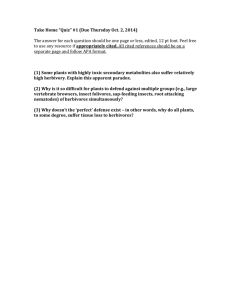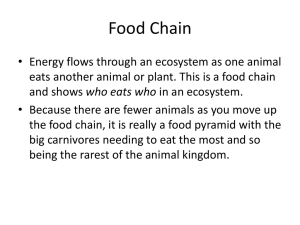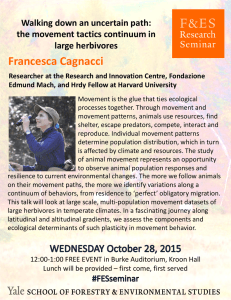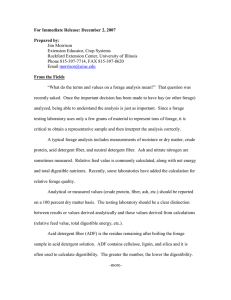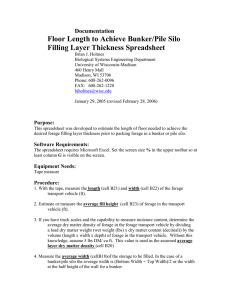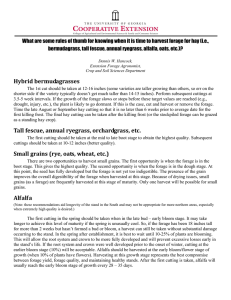, Plant Biochemical Maps of Forage Quality
advertisement
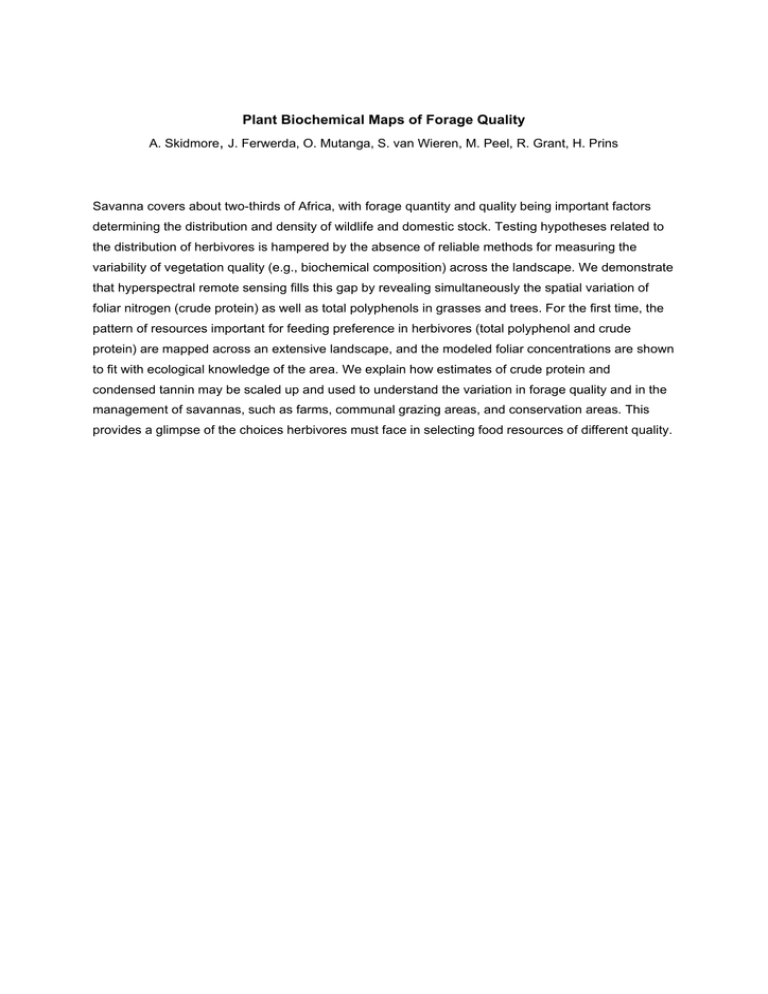
Plant Biochemical Maps of Forage Quality A. Skidmore, J. Ferwerda, O. Mutanga, S. van Wieren, M. Peel, R. Grant, H. Prins Savanna covers about two-thirds of Africa, with forage quantity and quality being important factors determining the distribution and density of wildlife and domestic stock. Testing hypotheses related to the distribution of herbivores is hampered by the absence of reliable methods for measuring the variability of vegetation quality (e.g., biochemical composition) across the landscape. We demonstrate that hyperspectral remote sensing fills this gap by revealing simultaneously the spatial variation of foliar nitrogen (crude protein) as well as total polyphenols in grasses and trees. For the first time, the pattern of resources important for feeding preference in herbivores (total polyphenol and crude protein) are mapped across an extensive landscape, and the modeled foliar concentrations are shown to fit with ecological knowledge of the area. We explain how estimates of crude protein and condensed tannin may be scaled up and used to understand the variation in forage quality and in the management of savannas, such as farms, communal grazing areas, and conservation areas. This provides a glimpse of the choices herbivores must face in selecting food resources of different quality.

